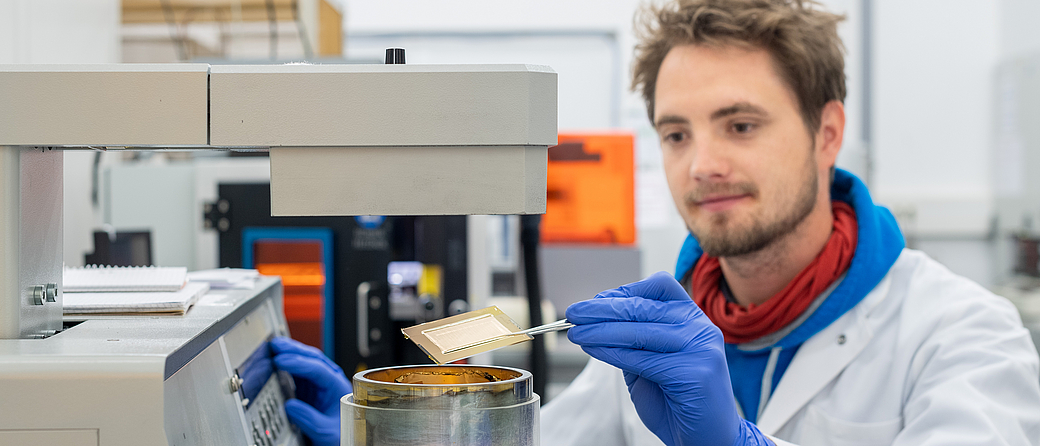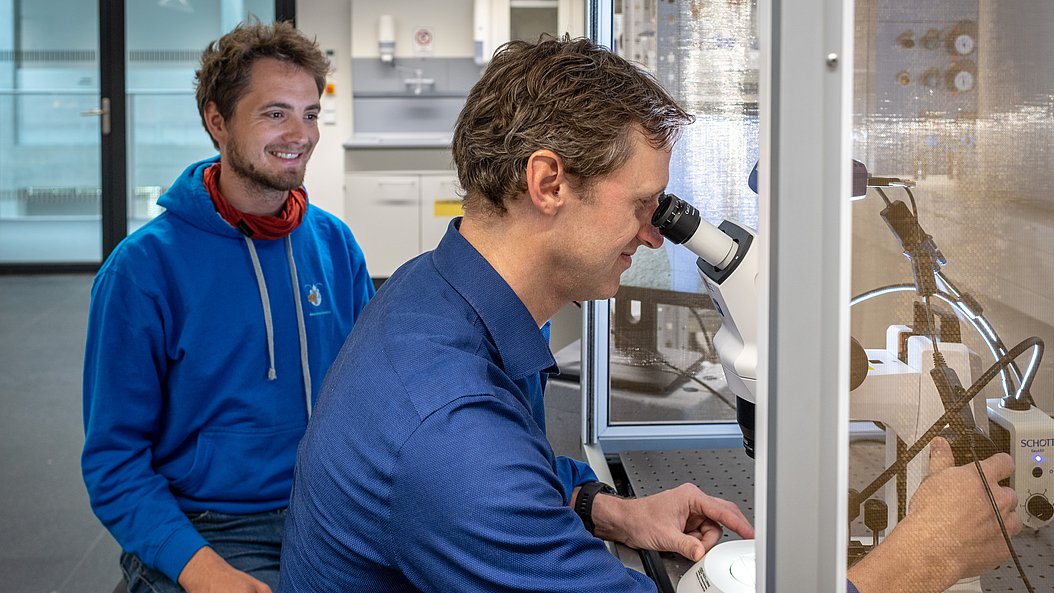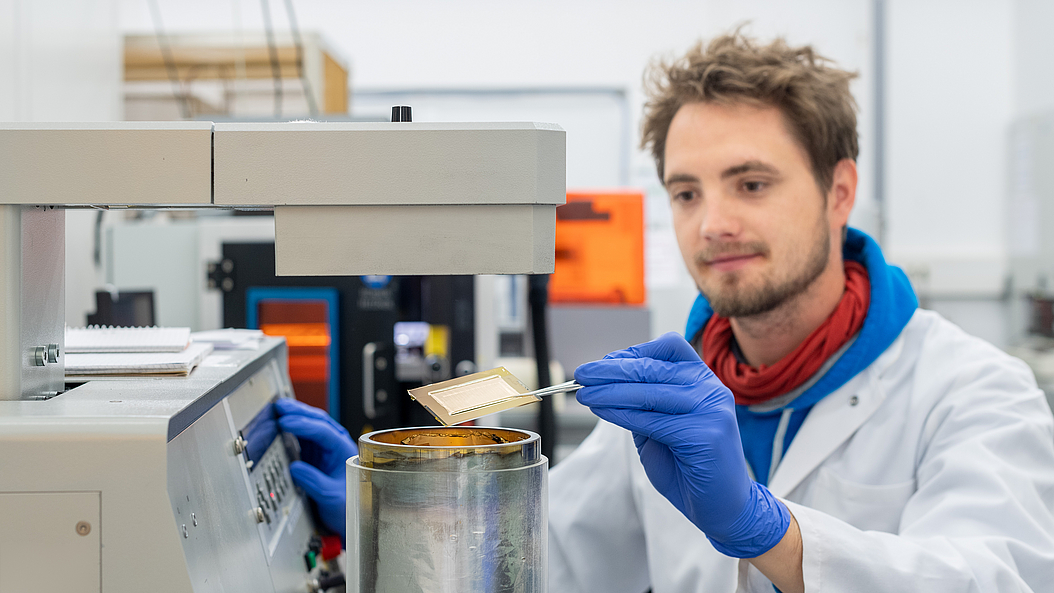Specific nerves may be stimulated artificially, for example to treat pain. The finer the nerves, the more difficult it is to attach the required electrodes. Researchers at the Technical University of Munich (TUM) and NTT Research have now developed flexible electrodes produced with 4D printing technology. On contact with moisture, they automatically fold and wrap themselves around thin nerves.
The nervous system controls our movements through electrical impulses. An example is muscle contractions. The electrical impulses pass from nerve cell to nerve cell until finally a muscle contraction is triggered. Nerve cells can also be stimulated artificially, triggering the nerves with current pulses via acutely applied or implanted electrodes. Doctors use peripheral nerve stimulation to treat chronic pain or sleep apnea, for example. Furthermore, there are clinical applications for stimulating the vagus nerve to treat for depression and epilepsy. With a diameter of several millimeters, this nerve is relatively thick.
In comparison, stimulation of nerves with diameters ranging from tens to hundreds of micrometers is more challenging. These thin as hair nerves require electrodes produced with fineness and precision. Inserting and attaching the electrode to the nerves in the micrometer range is also more complicated.

At this point content of an external provider (source: www.youtube-nocookies.com) is integrated. When displaying, data may be transferred to third parties or cookies may be stored, therefore your consent is required.
You can find more information and the possibility to revoke your consent at our privacy statement.
Video: Lukas Hiendlmeier / TUM
4D printing opens the door to novel shapes
4D printing involves reshaping 3D-printed objects in a targeted manner, for example using moisture or heat. Researchers at the Technical University of Munich and the Medical & Health Informatics (MEI) Lab at NTT Research have now developed 4D-printed electrodes that wrap themselves around ultra-thin nerve fibers when inserted into moist tissue. Scientists initially fabricate the electrode using 3D printing technology, allowing flexible adaptation of the shape, diameter, and other features.
The outer sheath of the electrode comprises a biocompatible hydrogel that swells upon contact with moisture. The material on the inside is flexible but does not swell. This configuration causes the electrodes to automatically wrap themselves around the nerve fibers when exposed to the moisture of the tissue.
The structured titanium-gold coating on the inside of the electrodes transmits electrical signals between the electrodes and the nerve fibers. "The close contact between the folded cuffs and the nerves allows us to both stimulate the nerves and measure nerve signals with the electrodes," says Bernhard Wolfrum, Professor of Neuroelectronics and head of the study. This expands the range of possibilities for potential applications.
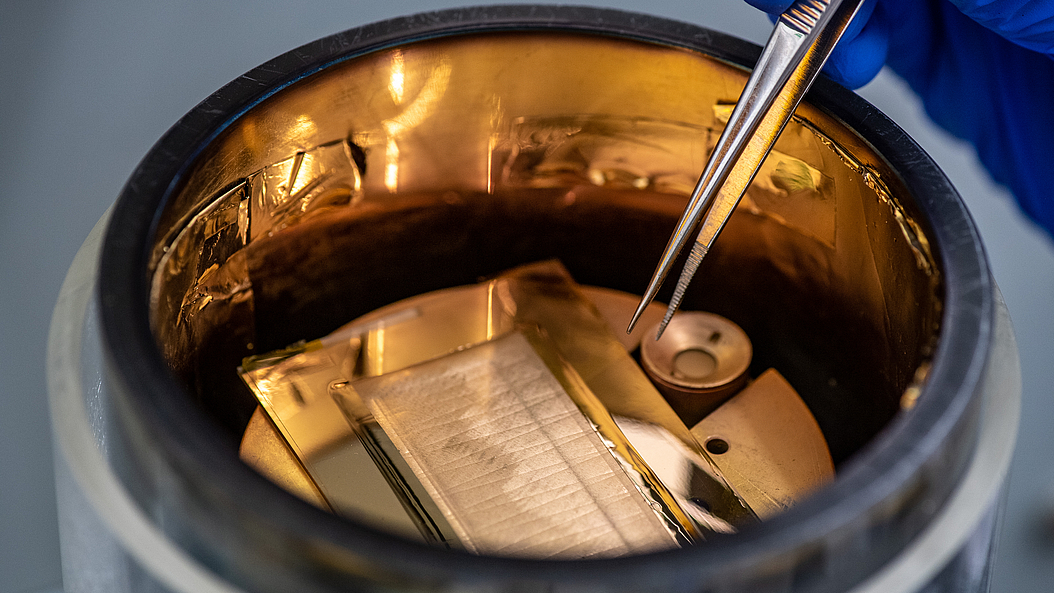
Image: Andreas Heddergott / TUM
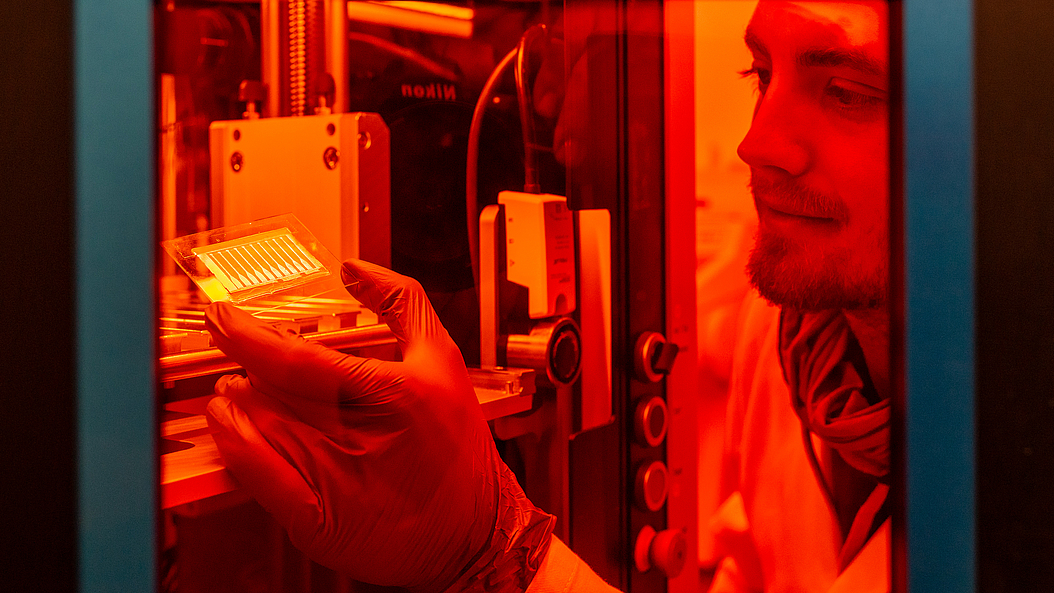
Image: Andreas Heddergott / TUM
Better selectivity in stimulation
A variety of biomedical applications for the new electrodes are conceivable in the future. One example is improved implants for sleep apnea. In patients who suffer from sleep apnea, the tongue drops back toward the throat and briefly obstructs the airway. Stimulating the muscles that pull the tongue forward can correct the problem. "Currently, however, selectively stimulating only those muscles that move the tongue forward is difficult. This is where the flexible electrodes might be applied to facilitate stimulating nerves more selectively in the future," says Professor Clemens Heiser, senior physician at the Department of Otolaryngology at the TUM University Hospital Klinikum rechts der Isar.
The self-folding electrodes are robust and easy to manage. The research team has already demonstrated the application of the electrodes in locusts: fine nerve fibers with a diameter of 100 micrometers were sheathed without damaging the nerves. This allowed the scientists to stimulate muscles in a very targeted manner. While still in an early development stage, the electrodes may provide an important means of deploying peripheral nerve stimulation for broader clinical application in the future.
Publication
Lukas Hiendlmeier, Francisco Zurita, Jonas Vogel, Fulvia Del Duca, George Al Boustani, Hu Peng, Inola Kopic, Marta Nikić, Tetsuhiko F. Teshima, Bernhard Wolfrum: 4D-Printed Soft and Stretchable Self-Folding Cuff Electrodes for Small-Nerve Interfacing, Advanced Materials (2023), DOI: https://doi.org/10.1002/adma.202210206
More Information
- The work is part of a project of the TUM Innovation Network NEUROTECH. In the TUM Innovation Networks, researchers work closely together across disciplines to open up new research areas and shape future innovation hotspots at an early stage.
- The Munich Multiscale Biofabrication Network supported the work, which is part of the ONE MUNICH Strategy Forum, in which TUM and LMU identify and promote joint initiatives on major future issues and fields. Hightech Agenda Bayern support the ONE MUNICH Strategy Forum.
- The Federal Ministry of Education and Research (BMBF) and the Free State of Bavaria funds the ONE MUNICH Strategy Forum and the TUM Innovation Networks are funded by under the Excellence Strategy of the Federal Government and the Länder.
- The Medical & Health Informatics (MEI) Lab at NTT Research, Inc., a division of NTT, collaborated on the work.
- Prof. Bernhard Wolfrum conducts research at the Munich Institute of Biomedical Engineering (MIBE), an Integrative Research Institute within TUM. At MIBE, researchers specializing in medicine, the natural sciences, engineering, and computer science join forces to develop new methods for preventing, diagnosing, or treating diseases. The activities cover the entire development process – from the study of basic scientific principles through to their application in new medical devices, medicines, and software.
Contact Media Relations
Corporate Communications Center
Technical University of Munich
Carolin Lerch
carolin.lerch@tum.de
Media relations MIBE:
presse@bioengineering.tum.de
Scientific Contact
Prof. Dr. Bernhard Wolfrum
Technical University of Munich
Professor of Neuroelectronics
